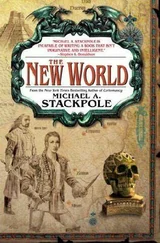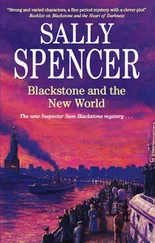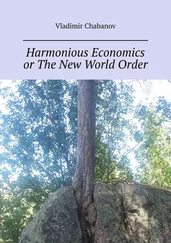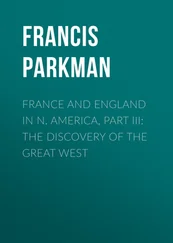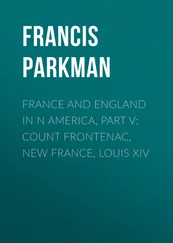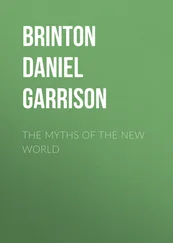Francis Parkman - France and England in North America, Part I - Pioneers of France in the New World
Здесь есть возможность читать онлайн «Francis Parkman - France and England in North America, Part I - Pioneers of France in the New World» — ознакомительный отрывок электронной книги совершенно бесплатно, а после прочтения отрывка купить полную версию. В некоторых случаях можно слушать аудио, скачать через торрент в формате fb2 и присутствует краткое содержание. Жанр: foreign_prose, История, foreign_edu, foreign_antique, на английском языке. Описание произведения, (предисловие) а так же отзывы посетителей доступны на портале библиотеки ЛибКат.
- Название:France and England in North America, Part I: Pioneers of France in the New World
- Автор:
- Жанр:
- Год:неизвестен
- ISBN:нет данных
- Рейтинг книги:4 / 5. Голосов: 1
-
Избранное:Добавить в избранное
- Отзывы:
-
Ваша оценка:
- 80
- 1
- 2
- 3
- 4
- 5
France and England in North America, Part I: Pioneers of France in the New World: краткое содержание, описание и аннотация
Предлагаем к чтению аннотацию, описание, краткое содержание или предисловие (зависит от того, что написал сам автор книги «France and England in North America, Part I: Pioneers of France in the New World»). Если вы не нашли необходимую информацию о книге — напишите в комментариях, мы постараемся отыскать её.
France and England in North America, Part I: Pioneers of France in the New World — читать онлайн ознакомительный отрывок
Ниже представлен текст книги, разбитый по страницам. Система сохранения места последней прочитанной страницы, позволяет с удобством читать онлайн бесплатно книгу «France and England in North America, Part I: Pioneers of France in the New World», без необходимости каждый раз заново искать на чём Вы остановились. Поставьте закладку, и сможете в любой момент перейти на страницу, на которой закончили чтение.
Интервал:
Закладка:
Red-hot with a determined purpose, the Adelantado would brook no delay. To him, says the chronicler, every day seemed a year. He was eager to anticipate Ribaut, of whose designs and whose force he seems to have been informed to the minutest particular, but whom he hoped to thwart and ruin by gaining Fort Caroline before him. With eleven ships, therefore, he sailed from Cadiz, on the twenty-ninth of June, 1565, leaving the smaller vessels of his fleet to follow with what speed they might. He touched first at the Canaries, and on the eighth of July left them, steering for Dominica. A minute account of the voyage has come down to us, written by Mendoza, chaplain of the expedition,—a somewhat dull and illiterate person, who busily jots down the incidents of each passing day, and is constantly betraying, with a certain awkward simplicity, how the cares of this world and of the next jostle each other in his thoughts.
On Friday, the twentieth of July, a storm fell upon them with appalling fury. The pilots lost their wits, and the sailors gave themselves up to their terrors. Throughout the night, they beset Mendoza for confession and absolution, a boon not easily granted, for the seas swept the crowded decks with cataracts of foam, and the shriekings of the gale in the rigging overpowered the exhortations of the half-drowned priest. Cannon, cables, spars, water-casks, were thrown overboard, and the chests of the sailors would have followed, had not the latter, in spite of their fright, raised such a howl of remonstrance that the order was revoked. At length day dawned, Plunging, reeling, half under water, quivering with the shock of the seas, whose mountain ridges rolled down upon her before the gale, the ship lay in deadly peril from Friday till Monday noon. Then the storm abated; the sun broke out; and again she held her course.
Конец ознакомительного фрагмента.
Текст предоставлен ООО «ЛитРес».
Прочитайте эту книгу целиком, купив полную легальную версию на ЛитРес.
Безопасно оплатить книгу можно банковской картой Visa, MasterCard, Maestro, со счета мобильного телефона, с платежного терминала, в салоне МТС или Связной, через PayPal, WebMoney, Яндекс.Деньги, QIWI Кошелек, бонусными картами или другим удобным Вам способом.
1
Herrera, Hist. General, Dec. I. Lib. LX. c. 11; De Laet, Novus Orbis, Lib. I. C. 16 Garcilaso, Just. de la Florida, Part I. Lib. I. C. 3; Gomara, Ilist. Gin. des Indes Occidentales, Lib. II. c. 10. Compare Peter Martyr, De Rebus Oceanicis, Dec. VII. c. 7, who says that the fountain was in Florida.
The story has an explanation sufficiently characteristic, having been suggested, it is said, by the beauty of the native women, which none could resist, and which kindled the fires of youth in the veins of age.
The terms of Ponce de Leon's bargain with the King are set forth in the MS. Gapitnincion con Juan Ponce sobre Biminy. He was to have exclusive right to the island, settle it at his own cost, and be called Adelantado of Bimini; but the King was to build and hold forts there, send agents to divide the Indians among the settlers, and receive first a tenth, afterwards a fifth, of the gold.
2
Fontanedo in Ternaux-Compans, Recueil sur la Floride, 18, 19, 42. Compare Herrera, Dec. I. Lib. IX. c. 12. In allusion to this belief, the name Jordan was given eight years afterwards by Ayllon to a river of South Carolina.
3
Hakinyt, Voyaqes, V. 838; Barcia, Ensayo Cronologico, 5.
4
Peter Martyr in Hakinyt. V. 333; De Laet, Lib. IV. c. 2.
5
Their own exaggerated reckoning. The journey was prohably from Tampa Bay to the Appalachicola, by a circuitous route.
6
Narrative of Alvar Nunez Caheca de Vaca, second in command to Narvaez, translated by Buckingham Smith. Cabeca do Vaca was one of the four who escaped, and, after living for years among the tribes of Mississippi, crossed the river Mississippi near Memphis, journeyed westward by the waters of the Arkansas and Red River to New Mexico and Chihuahua, thence to Cinaloa on the Gulf of California, and thence to Mexico. The narrative is one of the most remarkable of the early relations. See also Ramusin, III. 310, and Purchas, IV. 1499, where a portion of Cabeca de Vaca is given. Also, Garcilaso, Part I. Lib. I. C. 3; Gomara, Lih. II. a. 11; De Laet, Lib. IV. c. 3; Barcia, Ensayo Crenolegico, 19.
7
I have followed the accounts of Biedma and the Portuguese of Elvas, rejecting the romantic narrative of Garcilaso, in which fiction is hopelessly mingled with truth.
8
The spirit of this and other Spanish enterprises may be gathered from the following passage in an address to the King, signed by Dr. Pedro do Santander, and dated 15 July, 1557:– "It is lawful that your Majesty, like a good shepherd, appointed by the hand of the Eternal Father, should tend and lead out your sheep, since the Holy Spirit has shown spreading pastures whereon are feeding lost sheep which have been snatched away by the dragon, the Demon. These pastures are the New World, wherein is comprised Florida, now in possession of the Demon, and here he makes himself adored and revered. This is the Land of Promise, possessed by idolaters, the Amorite, Ainalekite, Moabite, Cauaauite. This is the land promised by the Eternal Father to the faithful, since we are commanded by God in the Holy Scriptures to take it from them, being idolaters, and, by reason of their idolatry and sin, to put them all to the knife, leaving no living thing save maidens and children, their cities robbed and sacked, their walls and houses levelled to the earth."
The writer then goes into detail, proposing to occupy Florida at various points with from one thousand to fifteen hundred colonists, found a city to be called Philippina, also another at Tuscaloosa, to be called Cxsarea, another at Tallahassee, and another at Tampa Bay, where he thinks many slaves can be had. Carta del Doctor Pedro de Santander.
9
The True and Last Discoverie of Florida, made by Captian John Ribault, in the Yeere 1692, dedicated to a great Nobleman in Fraunce, and translated into Englishe by one Thomas Haclcit, This is Ribaut's journal, which seems not to exist in the original. The translation is contained in the rare black-letter tract of Hakinyt called Divers Voyages (London, 1582), a copy of which is in the library of Harvard College. It has been reprinted by the Hakluyt Society. The journal first appeared in 1563, under the title of The Whole and True Discoverie of Terra Florida (Englished The Florishing Land). This edition is of extreme rarity.
10
Ribaut thinks that the Broad River of Port Royal is the Jordan of the Spanish navigator Yasquez de Ayllon, who was here in 1520, and gave the name of St. Helena to a neighboring cape (Garcilaso, Florida del Inca). The adjacent district, now called St. Helena, is the Chicora of the old Spanish maps.
11
No trace of this fort has been found. The old fort of which the remains may be seen a little below Beaufort is of later date.
12
For all the latter part of the chapter, the authority is the first of the three long letters of Rena de Laudonniere, Companion of Ribaut and his successor in command. They are contained in the Histoire Notable de la Floride, compiled by Basanier (Paris, 1586), and are also to he found, quaintly "done into English," in the third volume of Hakluyt's great collection. In the main, they are entitled to much confidence.
Читать дальшеИнтервал:
Закладка:
Похожие книги на «France and England in North America, Part I: Pioneers of France in the New World»
Представляем Вашему вниманию похожие книги на «France and England in North America, Part I: Pioneers of France in the New World» списком для выбора. Мы отобрали схожую по названию и смыслу литературу в надежде предоставить читателям больше вариантов отыскать новые, интересные, ещё непрочитанные произведения.
Обсуждение, отзывы о книге «France and England in North America, Part I: Pioneers of France in the New World» и просто собственные мнения читателей. Оставьте ваши комментарии, напишите, что Вы думаете о произведении, его смысле или главных героях. Укажите что конкретно понравилось, а что нет, и почему Вы так считаете.



